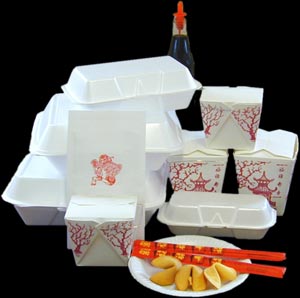By Chantal Braganza
A year ago I interviewed a brilliant and incredibly nice woman named Lily about a book she wrote. It’s called Eating Chinese; a perceptive look at how Chinese-owned restaurants in Canada both invigorated the country’s restaurant industry in the early 1900’s and, in some cases, created cuisines of their own. If you’re interested in food, immigration issues and Canadian history, this is a read I would suggest. Among many things, what Lily’s book does remarkably well is make a case for North American-Chinese cooking as a legitimate cuisine. And by North American-Chinese cooking, I mean the stuff no one ever thinks of as “authentic” anymore: egg rolls, chop suey, sweet & sour and moo shoo pork.
With time, our ideas in this part of the world about what food is change. Fifty years ago we’d go on dates and bring our kids to restaurants with such sino-colourful names as Gold Mountain or Red Dragon, awkwardly slurp a bowl of egg foo yong with these newfangled things called chopsticks and tell ourselves we were eating something exotic—the way everyone, every person, from all over the most populated country in the world, ate at home in China.
By the late nineties, and definitely now, to certain types of food lovers there is no such thing as Chinese (and yes, rightly so). There’s Szechuan, Hong Kong and Hunan, sure. Double points if you can pin what you’re eating to a specific city. Triple if the person who made it is actually from there.
Lily told me funny research stories about poring over archived menus, photos, even grocery orders while working on the thesis that later became a book. None of these made it to the story, which was kind of a shame.
One time, she looked at the grocery orders from a migrant Chinese cook who worked for a wealthy family in Alberta a long time ago. I never wrote down when. It wasn’t in a major city, so he would have had to send out orders weekly for the household’s food. She looked at what the cook was ordering and could figure out what kind of dishes the cook was making based on the ingredients. When more vinegar was being ordered, more sweet and sour dishes were happening. Bell peppers and onions for improvised stir-fries were a common occurrence. As with a number of Chinese restaurant owners who by the Second World War no longer felt they had to serve canned spaghetti and hot beef sandwiches to stay in business, this cook was simply using ingredients available with techniques he knew to make what he could.
“What’s so interesting about these kinds of Chinese restaurants,” Lily told me, “is that they take what that question of ‘What is Chinese?’ reveals, and they give it back to them. They say, well, ‘Here’s what you think real Chinese food is, and this is what we think you want.’ They were incredibly perceptive, these restaurant owners, at reading the communities they were in, and giving back to people a version of it.”
And you know what? That version’s actually pretty great if you know where to go. Try the chicken balls at China Gourmet, and tell me I’m wrong.









